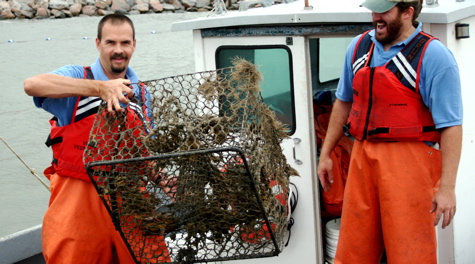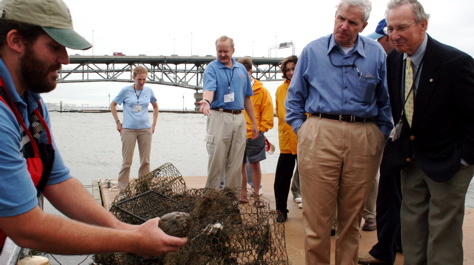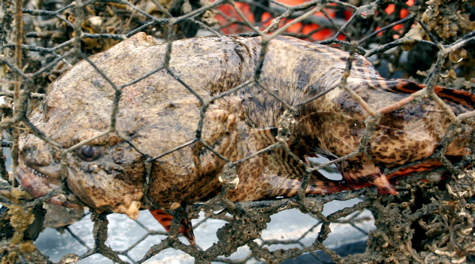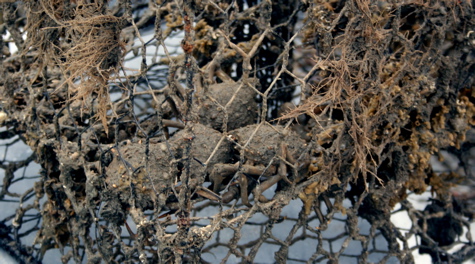NOAA, VIMS announce plans to study derelict crab pots
The NOAA Office of Response and Restoration, the Virginia Institute of Marine Science, and state and local governments demonstrated their commitment towards eradicating derelict crab pots and other abandoned fishing gear from the Chesapeake Bay. During an event at the Freight Shed at Riverwalk Landing in Yorktown, Va., agency representatives highlighted an ongoing project to identify, map and assess crab pots and the stress they impose on the health and economy of the Bay.
The project, "Identification, Mapping and Assessment of Derelict Fishing Gear in the Chesapeake Bay," focuses on investigating the impact of derelict crab pots, also known as "ghost" crab pots, which are lost during storms or have been accidentally cut loose from their buoys by boat motors. They have a detrimental effect on the Chesapeake Bay as they continue to catch blue crabs and other important living bay resources without ever being retrieved. In addition to the loss of crabs, ghost pots create a hazard for boaters by adding to the debris in the bay.
"NOAA is proud to be involved in projects like this one that work to develop solutions to reduce the impact that marine debris has on our resources and environment," said Brigadier General Jack Kelly (Ret.), NOAA deputy undersecretary for oceans and atmosphere. "This project highlights the true problem of derelict crab pots in our bay with more than 900 of them having been identified in the lower York River alone. These efforts support the President's Ocean Action Plan's mission to protect important coastal resources like the Chesapeake Bay."
Ghost crab pots are a persistent problem in Chesapeake Bay. Preliminary estimates of derelict trap densities for the surveyed portions of the Virginia and Maryland waterways are as high as 30 pots per kilometer for the York River in Virginia and 120 pots per kilometer for the South River in Maryland. Data gathered by VIMS and the NOAA Chesapeake Bay Office researchers since last November suggest that ghost pots identified in the surveyed area of the York River trap 100,000 crabs per year. If this pattern exists in other parts of the bay, the loss of crabs to ghost pots could be equal to nearly 15 percent of the annual harvest. However, more data and survey areas are needed to quantify this impact.
"It is clear from recent studies at VIMS that lost crab pots can affect the commercial and recreational fishery in Chesapeake Bay," said VIMS Dean and Director John Wells. "By sharing resources and data, VIMS and its state and federal partners will be able to implement practical solutions to this and other environmental problems."
Working together, NOAA and VIMS scientists are forging ahead with an assessment of these environmental hazards for fish, benthic habitat, and vessel operators. They hope to assist in the creation of an improved management plan and policy for blue crab stock in the Chesapeake Bay while reducing economic hardship for working watermen and fishers and engaging them in bay restoration.
The NOAA Marine Debris program works with other NOAA offices, as well as other federal, state and local agencies and private sector partners to support national, state, local and international efforts to protect and conserve the nation's natural resources and coastal waterways from the impacts of marine debris.
Relevant Web Sites
NOAA Media Contact
Megan Forbes, NOAA Office of Response & Restoration, (301) 713-2989 ext. 179 or cell (443) 695-0557







